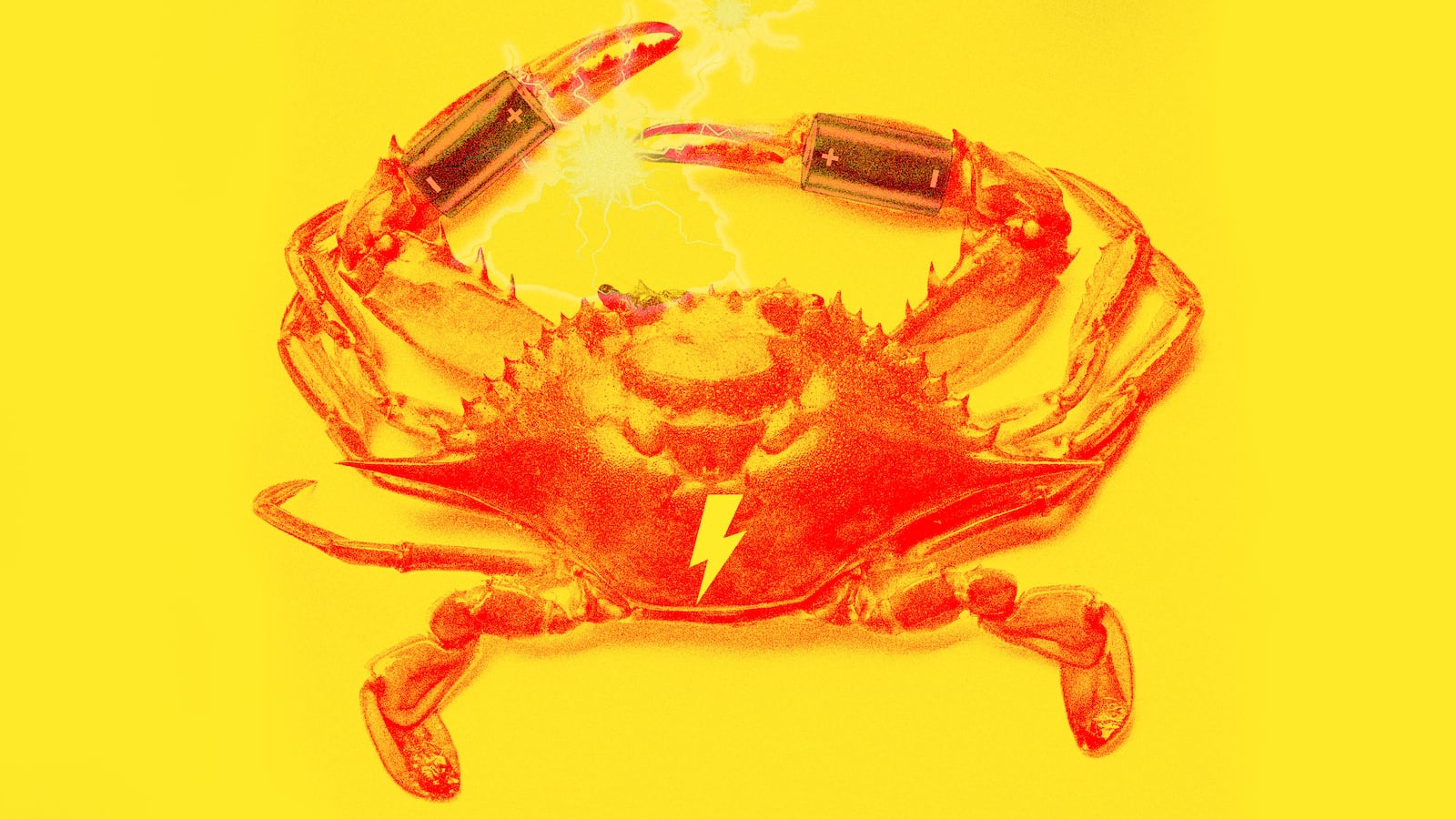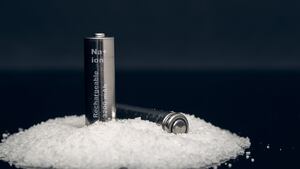Traditional lithium-ion batteries dominate the commercial market today, but they often contain components that aren’t environmentally sustainable. And if you’ve ever owned a smartphone, you know that the rechargeable lithium-ion and lithium-polymer batteries that power these devices lose their capacity to store a charge over time, and have a low but worrisome risk of exploding.
Now, a team of engineers has designed biodegradable battery components made from—wait for it—crab shells! The new battery, outlined in a new paper published Thursday in the journal Matter, uses zinc ions rather than lithium, and the crab shell compound stabilizes the battery and improves its efficiency more than other zinc-ion alternatives in development. The University of Maryland and University of Houston researchers who led the work hope their crabby battery can add an extra layer of sustainability to renewable energy sources and pave the way to a fully green energy infrastructure.
“Rechargeable aqueous [zinc] batteries have a strong potential to fulfill the needs of large-scale storage for renewable energies, for example wind and solar power,” study author and University of Maryland materials engineer Liangbing Hu told The Daily Beast in an email. Now that the kinks have been worked out, he believes the use of these batteries on a large scale is “very promising.”
Zinc-based batteries have yet to be commercialized because of a well-known problem: Zinc ions will crash out of the water-based solution in the battery and form protrusions called dendrites that over time cause the battery to short. Existing solutions to prevent dendrites from forming end up reducing the battery’s performance. Hu and his team decided to test out whether chitosan, an abundant compound that comes from the exoskeletons of crustaceans, could stabilize the zinc without massively impeding the battery.
They designed a porous structure of chitosan and zinc, which outperformed existing zinc batteries and remained nearly 100 percent efficient after hundreds of charging cycles. Then, the team buried the structures in soil. After two months, there were clear signs of the zinc and chitosan decomposing, and the structure fully decomposed after five months.
The lithium used in batteries requires immense amounts of water and energy to extract from mines or synthesize, and less than 40 percent of the materials that comprise batteries can be recycled, leading to most lithium-ion batteries winding up in landfills. Hu and his team hope their new development can lead to a battery that can be completely degraded or recycled—so that renewable energy sources like solar and wind can produce power that doesn’t require unsustainable processes to store. If the goal is to one day eliminate pollution, this battery is a step (or scuttle) in the right direction.







